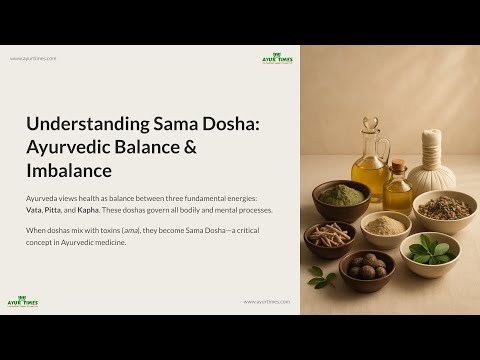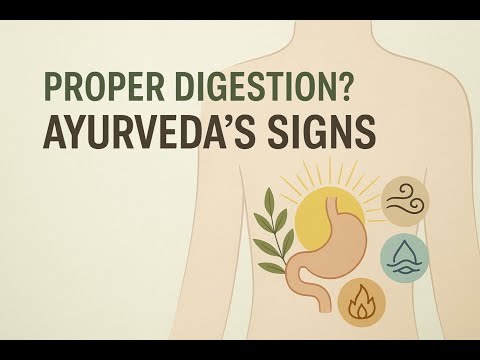Awesome articles related to food & Nutrition, alternative medicine and health A to Z
Don't wanna be here? Send us removal request.
Text
How to Use Mahanarayan Oil for Osteoarthritis (Oral Use)
Most people are familiar with Mahanarayan Oil as a massage oil for joint pain. But what’s truly remarkable is how effective it can be when taken internally. We’re talking about a traditional Ayurvedic approach that doesn’t just mask symptoms—it works deeply on the actual structures involved in joint health: bones, ligaments, tendons, and even the synovial fluid that cushions your…
0 notes
Text
Heal Your Gut, Heal Your Mind: Backed by Science & Ayurveda
Have you ever felt mentally foggy or emotionally drained after eating a heavy meal? Or calm and energised after a clean, wholesome dish? You’re not imagining it. Your gut is directly connected to your brain, influencing how you feel, think, and function. Continue reading Heal Your Gut, Heal Your Mind: Backed by Science & Ayurveda
0 notes
Text
Bilona Ghee vs Cream Ghee: A Complete Ayurvedic Comparison
Ghee has held a revered place in Indian households and Ayurvedic medicine for centuries. However, not all ghee is created equal. The method of preparation defines its digestive potency, therapeutic properties, and overall quality. Two common types of ghee available today are Bilona Ghee and Cream Ghee. Continue reading Bilona Ghee vs Cream Ghee: A Complete Ayurvedic Comparison
0 notes
Text
White Tongue in Ayurveda: Causes, Signs, and Remedies
A white-coated tongue may seem like a minor issue, but in Ayurveda, it is a major diagnostic sign. The tongue acts as a mirror of digestion, and when coated white, it is often an indication of the presence of ama—the toxic by-product of poor digestion. Ayurveda views this as a warning that the body is struggling with digestion and internal cleansing. What is Ama? Ama is a Sanskrit term meaning…

View On WordPress
0 notes
Text
Understanding Sama Dosha in Ayurveda: The Imbalance Within
In Ayurveda, health is a dynamic state of balance between the three fundamental energies or doshas—Vata, Pitta, and Kapha. These doshas govern all physiological and psychological processes in the body and mind. While balance (sama) among the doshas indicates good health, an imbalance (vishama) leads to disease. However, Ayurveda goes a step further by identifying a unique concept called Sama…

View On WordPress
0 notes
Text
Signs of Proper Digestion According to Ayurveda
In Ayurveda, digestion is considered the cornerstone of health. When your body digests food efficiently, it not only nourishes the tissues but also keeps the mind clear, energy flowing, and immunity strong. Unlike modern health approaches that often look for symptoms of poor digestion, Ayurveda also recognises positive indicators of healthy digestion. Let’s explore these signs to better…

View On WordPress
0 notes
Text
Appetite Rule in Ayurveda
Respecting your appetite is a foundational principle of Ayurvedic nutrition. Eating in accordance with your body’s hunger signals promotes health, strength, and longevity. This article outlines the Ayurvedic guidelines for managing appetite, understanding true hunger, and avoiding overeating. Continue reading Appetite Rule in Ayurveda
0 notes
Text
Pathyadi Kadha
Pathyadi Kadha is an Ayurvedic medicine mainly used for diseases of the head and nervous system.It is a classical formulation commonly prescribed for chronic headaches, migraines, and various types of Shiro Roga (head disorders). Pathyadi Kadha Ingredients IngredientsQuantityHaritaki (Terminalia chebula)1 TolaBibhitaki (Terminalia bellirica)1 TolaAmalaki (Emblica officinalis)1 TolaChirayata…
0 notes
Text
Ayurvedic Treatment for Parkinson’s Disease
Parkinson’s Disease (PD) is a progressive neurodegenerative disorder characterised by bradykinesia (slowness of movement), resting tremors, rigidity, and postural instability. It results from the gradual loss of dopaminergic neurons in the substantia nigra region of the brain. In Ayurveda, Parkinson’s Disease closely resembles Kampavata, a condition mentioned under Vata Vyadhi (neurological and…
0 notes
Text
Ayurvedic Treatment for Traumatic Brain Injury (TBI) – Herbs, Protocol & Dosha Analysis
Traumatic Brain Injury (TBI) occurs when an external force injures the brain, often due to accidents, falls, or violent impacts. TBI can range from mild (concussions) to severe forms involving loss of consciousness, cognitive deficits, motor dysfunction, speech problems, and emotional changes. In Ayurveda, such injuries are considered a result of sudden trauma (Abhighata) leading to disturbance…
0 notes
Text
The Ultimate Guide to Guggulu Formulations: Uses, Benefits, and Specialized Actions
Guggulu, derived from the resin of the Commiphora mukul tree, is one of the most widely used substances in Ayurvedic medicine due to its potent anti-inflammatory, detoxifying, and rejuvenating properties. Guggulu formulations are frequently used to treat a variety of ailments such as joint pain, skin diseases, obesity, metabolic disorders, and more. Here, we will explore the different types of…
0 notes
Text
Amrutashrak Kwath: A Powerful Ayurvedic Remedy for Pitta Disorders
Amrutashrak Kwath is an ancient Ayurvedic decoction formulated for the treatment of various disorders associated with an imbalance in the Pitta dosha. It consists of a unique blend of eight herbs that work together to bring balance to the body, particularly targeting issues such as fever, nausea, burning sensations, and digestive problems. This article delves into the composition of Amrutashrak…
0 notes
Text
Laghu Manjisthadi Kwath: An Ayurvedic Remedy for Skin and Blood Purification
Laghu Manjisthadi Kwath is an ancient Ayurvedic decoction, also known as “Navkarshik Kwath.” It contains a blend of nine herbs that work together to purify the blood and detoxify the body. This herbal remedy is useful in treating various skin and blood-related disorders. In this article, we will explore the herbs used in this formulation, their therapeutic benefits, and how Laghu Manjisthadi…
0 notes
Text
Brain Fog: A Comprehensive Guide from Psychological and Ayurvedic Perspectives
Brain fog is a term used to describe a state of mental confusion, reduced focus, and lack of clarity. It isn’t a medical condition but rather a symptom often associated with various underlying causes. People experiencing brain fog may find it difficult to concentrate, process information, recall things, or think clearly. Common Symptoms of Brain Fog Difficulty focusing or concentrating Poor…
0 notes
Text
Chronic Inflammation and Ayurveda: A Holistic Approach to Healing
Chronic inflammation is a persistent, low-grade response by the immune system that has been linked to a host of modern health challenges, including arthritis, diabetes, cardiovascular diseases, and autoimmune disorders. Unlike acute inflammation, which is a short-term healing response to injury or infection, chronic inflammation lingers in the body, causing ongoing tissue damage and systemic…
0 notes
Text
How to Prepare Manda, Peya, Vilepi, Yavagu, and Odana in Ayurveda
In Ayurveda, Manda, Peya, Vilepi, Yavagu, and Odana are rice-based preparations used primarily in Samsarjana Krama—the gradual reintroduction of food after therapies like Panchakarma. These preparations are often made using Raktashali rice, a red variety of rice prized for its therapeutic properties. Here’s a detailed guide on how to prepare each dish, including the rice-to-water ratios and their…
0 notes
Text
Types of Rice Preparations in Ayurveda: Understanding Manda, Peya, Vilepi, and Odana
Rice, a staple in many cultures, holds a significant place in Ayurveda, not only as a source of nourishment but also as a therapeutic food. The ancient Ayurvedic text, Ashtanga Hridaya, authored by Vagbhata, elaborates on different preparations of rice, each suited for specific health needs, digestive capacities, and therapeutic applications. These include Manda, Peya, Vilepi, and Odana. Let’s…
0 notes